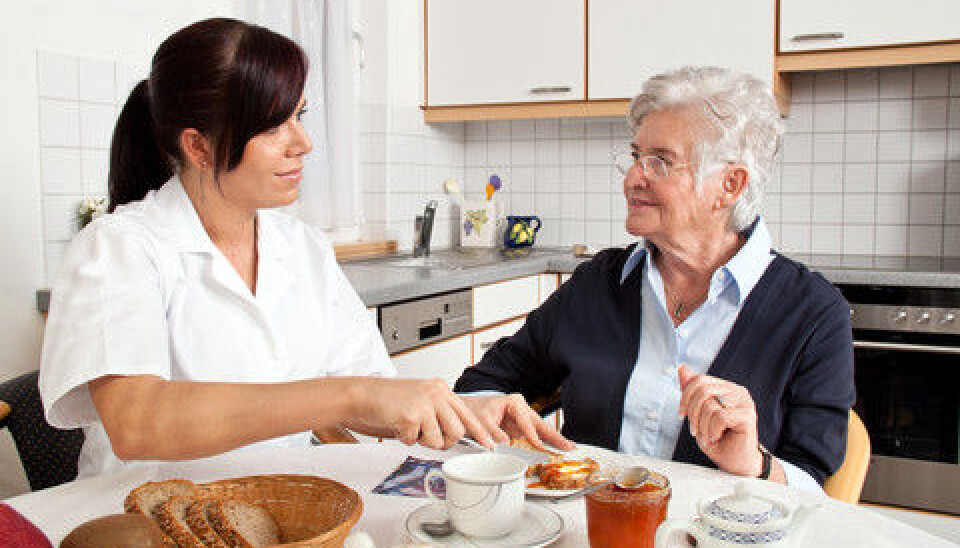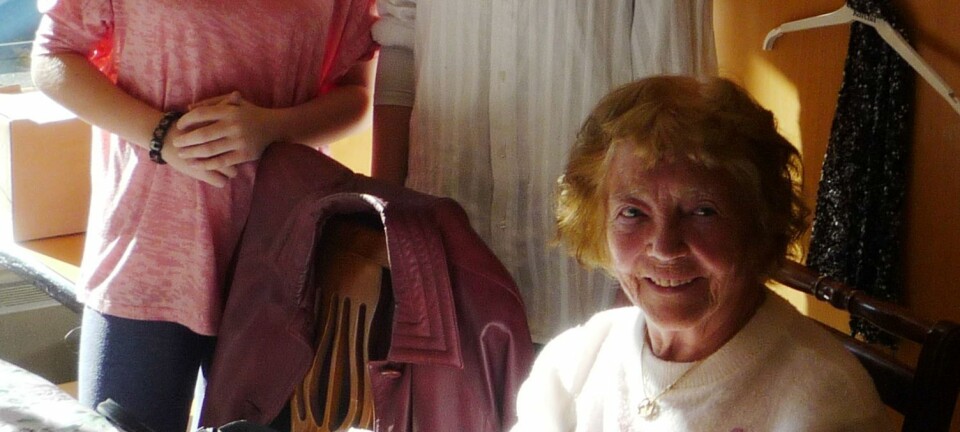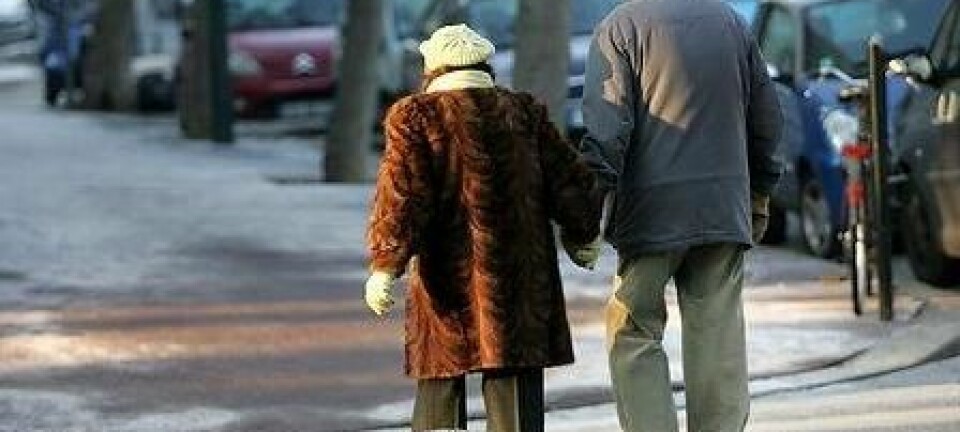This article was produced and financed by Oslo Metropolitan University

Elderly eat too little, and fast too long at night
One in three residents in nursing homes in Oslo is undernourished or at risk of undernutrition.
Denne artikkelen er over ti år gammel og kan inneholde utdatert informasjon.
Researchers have examined the duration of night-time fasting among residents of almost twenty municipal nursing homes in Oslo.
This was then measured against the residents' nutritional status.
The findings show that almost all the 342 residents in the study fasted for more than 11 hours between dinner/supper and breakfast the following day. Many fasted for around 15 hours, some as much as 19 hours. The current maximum recommended duration of night-time fasting for elderly residents of nursing homes is 11 hours.
Thirty-five percent those who had fasted for more than 11 hours had a medium or high risk of undernutrition. One in five residents were diagnosed as underweight, with a body mass index (BMI) of less than 20 kg/m2.
Nutrition versus efficient operation

"We interpret the findings as the result of a situation where the desire for best possible nutrition for elderly residents in nursing homes is challenged by demands for best possible operational efficiency, which is achieved in part by serving all the meals for an entire day within a specific time period"
"This clearly compromised the nutritional recommendation of a maximum of 11 hours of night-time fasting, and for this group of elderly people this is particularly detrimental," says Helene Dahl Eide.
Together with Carine Aukner, Dahl Eide conducted a study in connection with her master's thesis at the Department of Nutrition, University of Oslo. The study was conducted at 19 municipal nursing homes in Oslo during autumn 2010.
Problem not addressed earlier
The duration of night-time fasting in municipal nursing homes in Oslo was last examined in 2001. At that time it was found that the general duration of night-time fasting was too long, and measures that could reduce it were recommended.
In Eide and Aukner's study from 2010, only five residents out of a sample of 342 had night-time fasting times of 11 hours or less. The researchers examined BMI, weight loss during the past three to six months, triceps skinfold thickness, mid-upper arm circumference, and hand-grip strength. Because of the small size of the sample of residents with 11 hours or less night-time fasting, no qualified comparisons could be made.
For the 337 residents with night-time fasting lasting 11 hours or more, the results were as follows:
- 192 had low risk of undernutrition, 55 had medium risk, and 51 had high risk.
- BMI measurements showed that 67 residents were underweight (BMI < 20), 133 had normal weight, and 113 were overweight (BMI > 25).
- 241 residents showed weight loss of less than 5 percent, 36 showed weight loss of between 5 and 19 percent, and 19 showed weight loss of more than 10 percent.
- Based on the other indicators, 33 residents could be characterised as moderately undernourished and 47 residents as severely undernourished.
No signs of undernutrition were found among the 5 percent of residents with night-time fasting of 11 hours or less.
Undernutrition creates a vicious circle
Undernutrition in elderly people and in people experiencing age-related deterioration will act as a catalyst of illness. This may create to a vicious circle of illness and, consequently, low food intake, leading to further illness and even lower food intake.
"Physical deterioration and loss of quality of life occur even faster than they would otherwise have done, and the process itself could prove fatal if allowed to continue," says Dahl Eide.
"That's why it's important to measure weight frequently in order to detect weight loss which may not be visible but which may nonetheless be a vital sign of undernutrition or risk of undernutrition," says Dahl Eide.
The study findings suggest that the periods between weighings could be long, often several months.
More frequent meals and more enriched food
Physicians and clinical nutritionists agree that undernutrition is easer to prevent than to treat. Once an elderly person or a person experiencing age-related deterioration has become undernourished, it is difficult to reverse, and to be able to do this at all it must be detected as early as possible.
"From a nutritional perspective there is much to gain from providing residents with smaller meals more frequently across a greater part of the day instead of the present system of three mealtimes plus afternoon coffee. Concentrating fewer, larger meals into a period of seven to eight hours every day does little to promote a good appetite. Smaller, more frequent meals that could be organised and prepared locally would improve the situation," says Dahl Eide.
"Food could also be further enriched with butter and milk, for example, to provide the residents with more protein and energy".
It is also important to make mealtimes as pleasurable as possible for the residents.
"Remember that for many of them the nursing home is the only home they have," she says, adding that the City of Oslo focuses heavily on the nutritional challenges in nursing homes, and that projects to improve the situation are currently being undertaken.
Most of the hot food for the municipal nursing homes in Oslo is prepared in two main kitchens and distributed in containers to the respective institutions. Simple meals involving bread and coffee are prepared locally in the units.
Assures that the problem is being taking seriously
"The Agency for Nursing Homes is aware of the challenges and has given a lot of attention to nutrition during the past two years, as have the City's senior management", says Per Johannessen, Director of the Agency for Nursing Homes in the City of Oslo.
In autumn 2012 funding was granted to introduce hot meals at all municipal nursing homes, and dinner was served later, between 16.00 and 16.30. Late suppers and early breakfasts also reduce the length of night-time fasting.
"The Agency implemented these measures in close cooperation with nutritionists. In 2012, seventy-one chair scales were bought to make it easier to monitor the weight of nursing home residents, " says Johannessen, adding that in 2012 the Agency for Nursing Homes introduced a procedures known as "Mapping of Nutritional Status using MNA".
"On arrival, all residents have their nutritional status mapped. If their status is normal, they are weighed once a month. If they are undernourished or are at risk, they are weighed twice a week and measures are implemented according to their needs. This may entail serving enriched food, serving between-meal snacks or adapting the eating situation," says Johannessen.


































